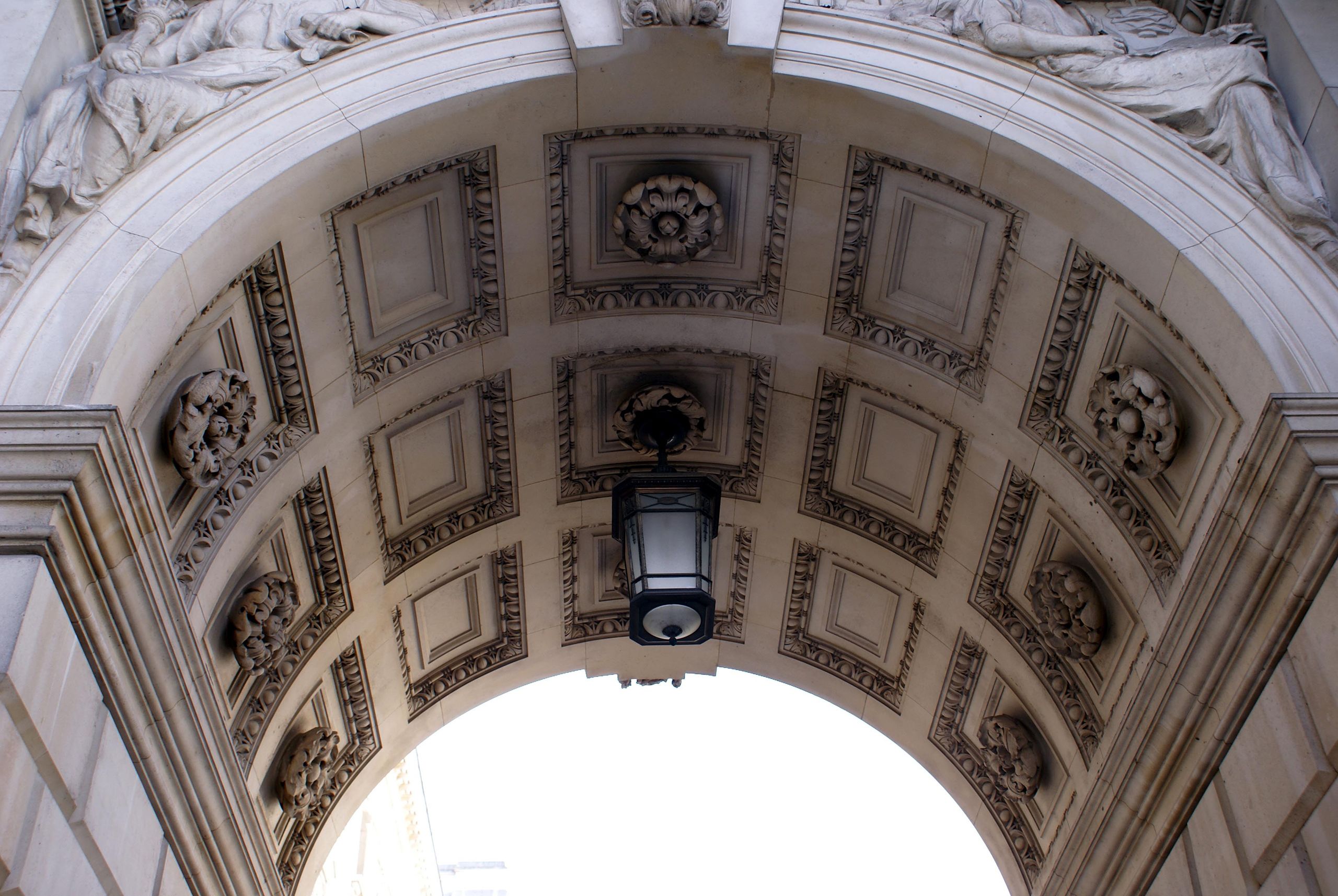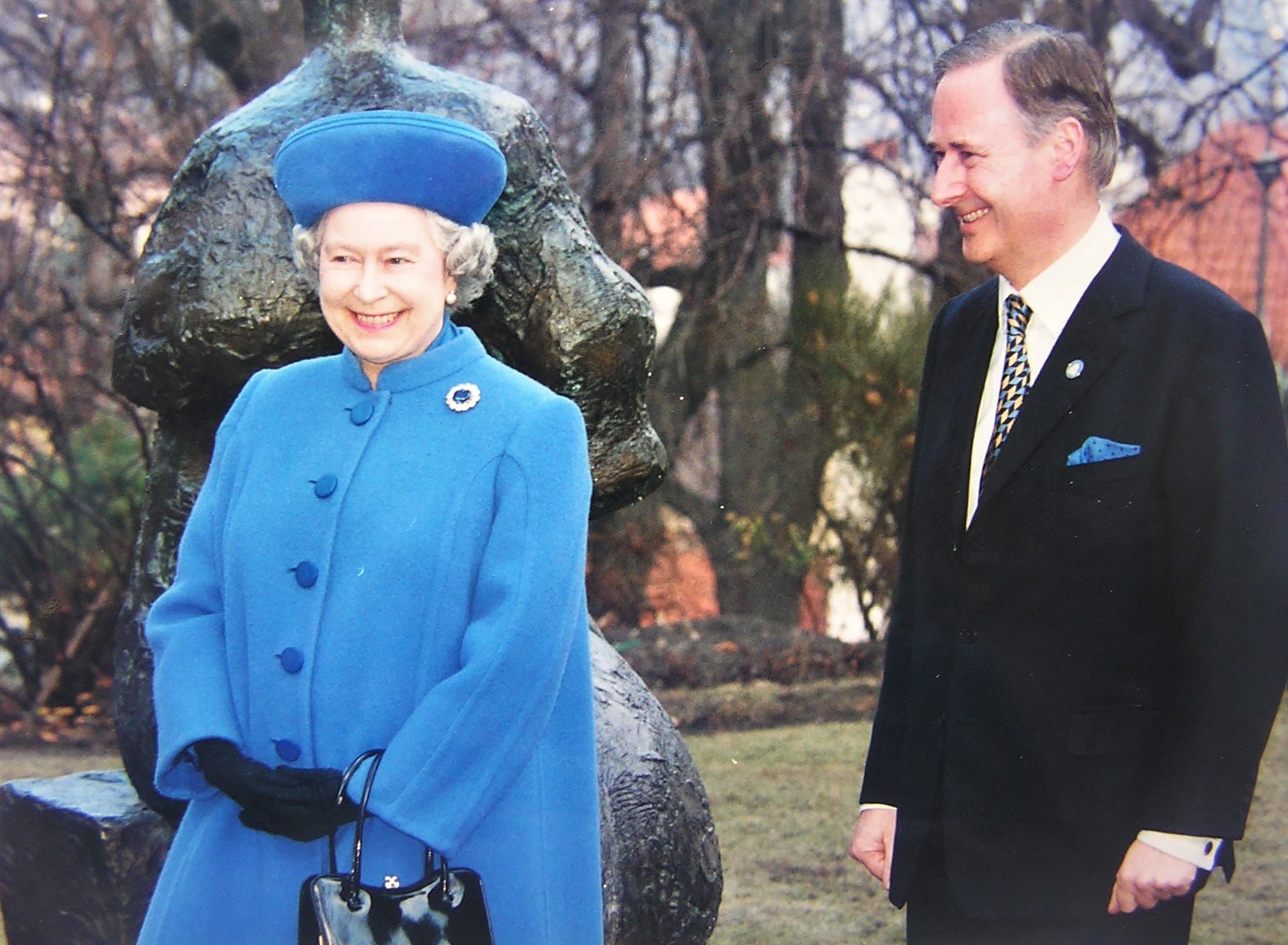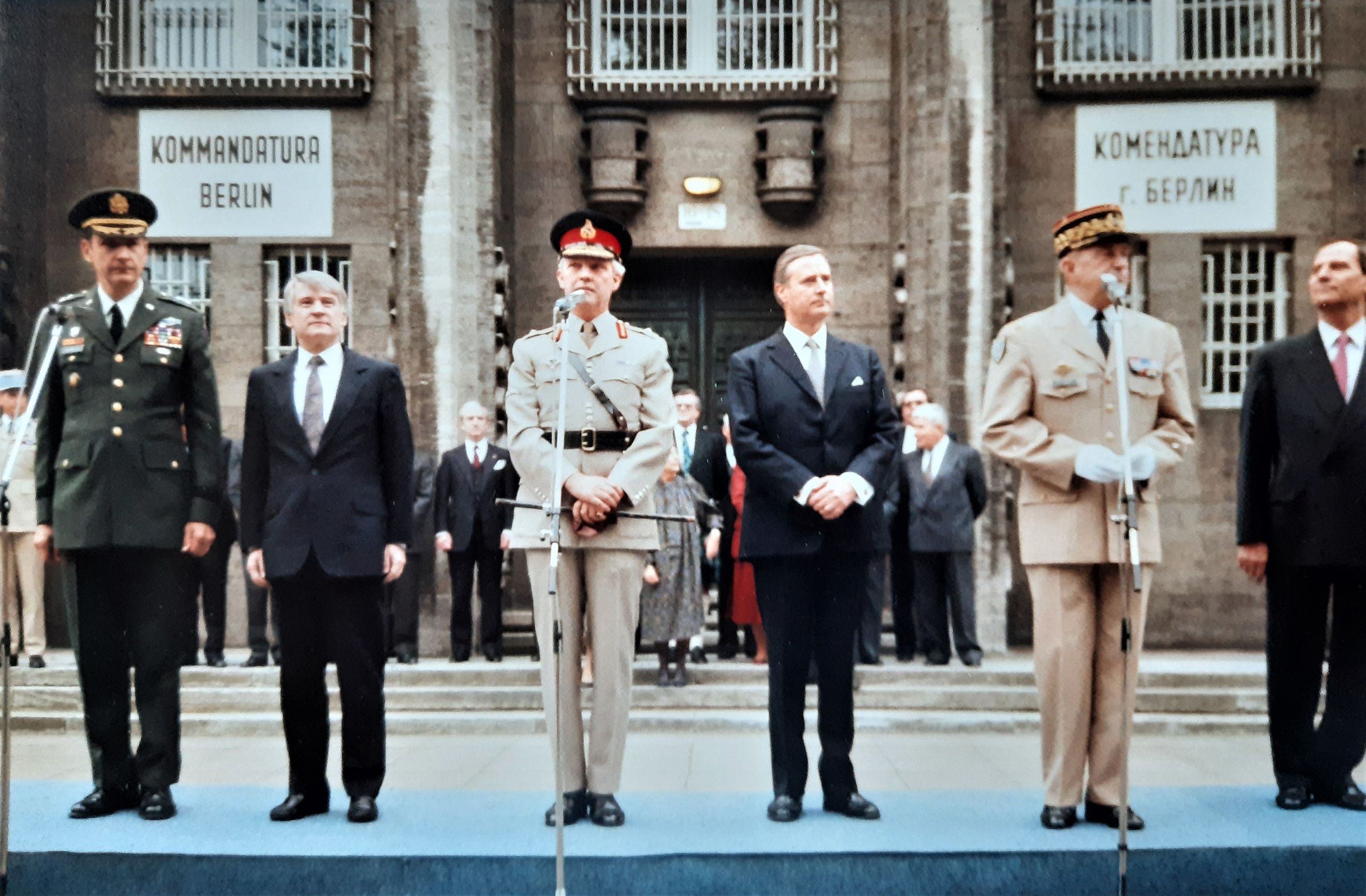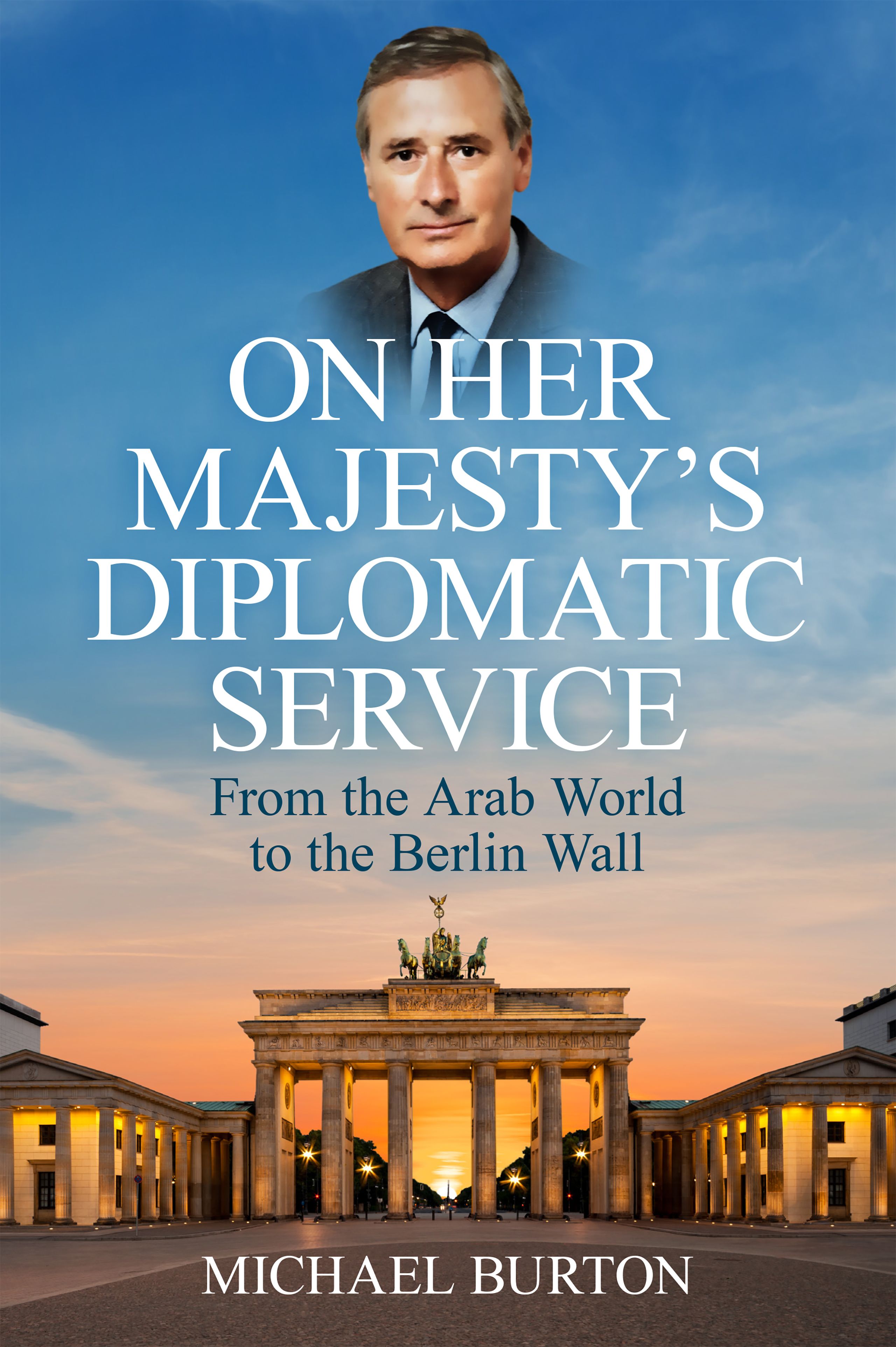On Her Majesty’s Diplomatic Service
From The Arab World To The Berlin Wall, Sir Michael Burton
discusses his experiences working for the British Foreign Office
during the last four decades of the twentieth century

I was fortunate that my 37-year long career in the British diplomatic service, ending in 1997, was unusually wide-ranging. Trained as an Arabist on joining the Service, about a third of it was spent in the Arab world; in Lebanon, Jordan, the Gulf and Sudan.
In Europe I served in the Paris Embassy at the critical juncture, as the UK was seeking to overcome French reservations at the start of our negotiations to it joining the EEC (Common Market). And then I was in Berlin in the eventful years before, during and after the Fall of the Berlin Wall and German reunification.
My final posting was as Ambassador in the Czech Republic a few years after its so-called Velvet Revolution, as it underwent the transition from a communist regime to becoming a member of Nato and the European Union.
My objective, in writing my memoir, was to give readers an idea of what it was like to represent Britain diplomatically during the last four decades of the twentieth century.
I also tried to look back into the mists of recent history to portray life in what is now the United Arab Emirates, when the sheikhdoms of the Trucial States, as they were called, were still under British Protection.
In Europe, my story is of a divided Berlin before the Fall of the Wall and reunification in which the three war-time Western Allies still exercised their post-war right and responsibilities. These only ended when the so-called Allied Kommandatura held its final meeting on the eve of German reunification.
A good way to see my diplomatic experience is through the prism of the four state visits by the late Queen and Prince Philip to countries in which I happened to be serving at the time. These visits left an indelible impression in the country they visited.

The first was to France in 1972, when the negotiations for the UK’s entry into the EEC had been successful – thanks, not least, to the work of the Paris Embassy in preparing the ground with French opinion. It was a glittering affair, the highlight being a truly magnificent Gala Evening at the Palace of Versailles with illuminated fountains playing in the grounds, the night sky ablaze with fireworks and guests sipping Champagne in the candle-lit Hall of Mirrors.
Apart from making the media arrangements, as the embassy press secretary, one particularly delicate task was to conceal from the media that the real purpose of the royal party’s call on the Duke of Windsor (the former king) and the Duchess in their villa in the Bois de Boulogne was to say farewell to the Duke, who died about two weeks later - since this would have affected the nature of the state visit. Afterwards I apologised to the journalists, who had been hoping for a picture of three generations of British monarchy!
The next royal visit could hardly have been more different. I was deputy head of mission in Kuwait in 1979 when the Queen and Prince Philip embarked on their historic visit to the Gulf, on board the Royal Yacht Britannia. It was historic because the Arab states of the gulf had been under British Protection for much of the preceding century, before achieving full independence, but no British monarch had previously visited them.
One of the fascinations of the visit was that it was also the first time that British royal protocol had been faced with the no less ancient traditions of Arab protocol, which place great emphasis on the principle of reciprocity. This produced some awkward moments, which needed delicate handling, and, on one occasion, the personal intervention of Prince Philip, to resolve!

I was to return to Kuwait when I accompanied the then Prince of Wales, as an advisor, on a tour he made of the Gulf in 1993, also on HMY Britannia. Prince Charles had recently delivered a powerful speech in Oxford on Islam and the West – a plea for mutual understanding, on the basis that the two systems had much to learn from each other. It had been very well received, and his reception wherever we went on the tour could not have been warmer.
The history of the twentieth century also hung heavily over my third visit, which was to reunified Germany and Berlin in 1992. The Queen had already visited both many times, but this was the first time she and Prince Philip could visit eastern Germany, the former GDR, and east Berlin.
One of the main subjects of discussion when planning the visit was whether she should go to Dresden, which had suffered so grievously in the Anglo-American air-raids of April 1945, almost at the end of the war. It was eventually decided to go ahead, but with a tightly controlled programme centred on a service of reconciliation in the city’s Kreuzkirche.
The highlight of the visit in Berlin was the royal couple walking through the Brandenburg Gate, a powerfully symbolic moment.
I was serving as Ambassador in Prague, my final posting, when, once again, I had the privilege of organising a state visit by the Queen. The context this time was that the royal couple, who also visited Poland in the course of the week, were making their first visit to central European countries that had recently emerged from communism. Their host in the Czech Republic was the former dissident playwright turned president, Vaclav Havel. He and the Queen had a great regard for each other.
After the formalities in Prague, including a magnificent state banquet in the course of which the Queen expressed her understanding of, and sympathy for, the Czechs’ feelings over the Munich Conference of 1938. The highlight was a visit to Brno, the country’s second city – on a glorious spring day.
On a personal note, the visit concluded with a lunch my wife and I gave for the royal party in our residence, the Thun Palace. After lunch, the Queen met the Embassy staff in the garden, beneath the wall of Prague Castle, and unveiled a sculpture by Henry Moore that we had been loaned. The visit was the climax of my career.

